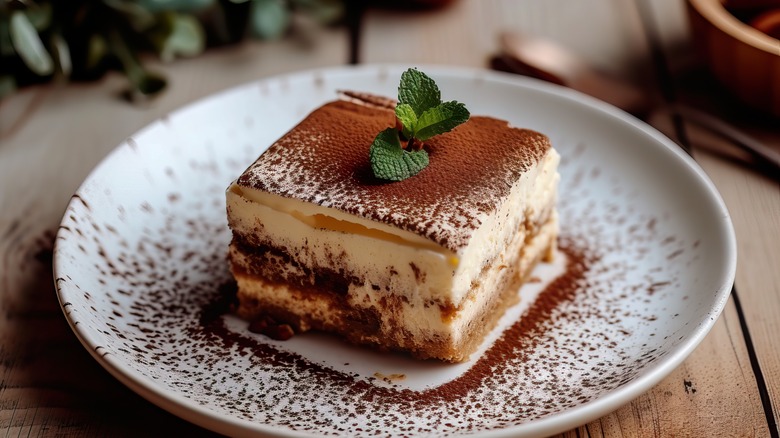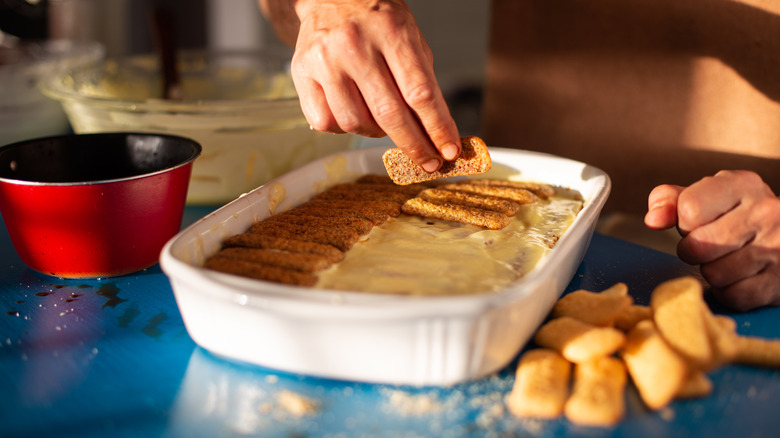The Brushing Technique That Will Keep Your Tiramisu From Getting Soggy
Coffee and dessert all in one bite, what could be better? On the list of Italian cakes you need to try at least once, tiramisu should be number one. This dessert is traditionally made up of layers of mascarpone cream and ladyfingers that are soaked in coffee and topped with cocoa powder for a sweet treat with a nice twang. The most difficult part of making this dessert is treating each layer with care; and in the case of the lady fingers, not 'coffee-logging' them (thereby making them mushy). For tips on how to keep tiramisu from getting too soggy, we spoke with Odette D'Aniello, baking expert and CEO at Dragonfly Cakes.
So how do you keep the texture and structural integrity of your tiramisu intact? According to D'Aniello, "ladyfingers soak up liquid fast, and if you dunk them, they can get too wet and make the tiramisu soggy. Brushing the syrup on gives you more control, so they absorb just enough to soften without falling apart." This is best done with a pastry brush, preferably one with non-plastic bristles, so you can properly coat the ladyfingers without drowning them. As D'Aniello says, "this way, the tiramisu keeps its structure while still having that melt-in-your-mouth texture." This hack is especially useful for making secret-ingredient instant tiramisu, or even just personal servings that aren't made in a large baking pan. Just remember to keep track of how much coffee is brushed across the ladyfingers so there are no dry patches or extra strong pockets of flavor.
Making the most of tiramisu
Once you've mastered the brush technique, you can focus on other small ways to enhance your tiramisu. Odette D'Aniello's company, Dragonfly Cakes, specializes in making petit fours, or small tea cakes, that can serve as inspiration for a bite-size tiramisu. D'Aniello says her bakery's "been working on a tiramisu using the extra pieces of our petit fours that are too small to sell. Since our cake layers are already delicate, brushing lets us control how much coffee flavor seeps in without making them too soft." So, for those who want to try a similar recipe at home to make the most of any leftover baked goods, the brush method will make things easier.
To make these particular tiramisu petit fours, D'Aniello says, "We just used really strong coffee and coffee flavoring to achieve the depth and we didn't put any alcohol in it." She added that "it's more accessible for our team with quite a few members who don't drink and the kids can run by and have a taste too!" The alcohol she's referring to in this case is amaretto, a liquor with a distinct almond flavor, that is sometimes used instead of coffee for a subtle flavor difference. While D'Aniello skips it in her recipe, those who want to give their tiramisu an adult upgrade should still use the brush technique to ensure the alcohol is evenly distributed. In the end, no matter which traditional liquid you use to make your tiramisu, a brush will always prevent unwanted sogginess.


